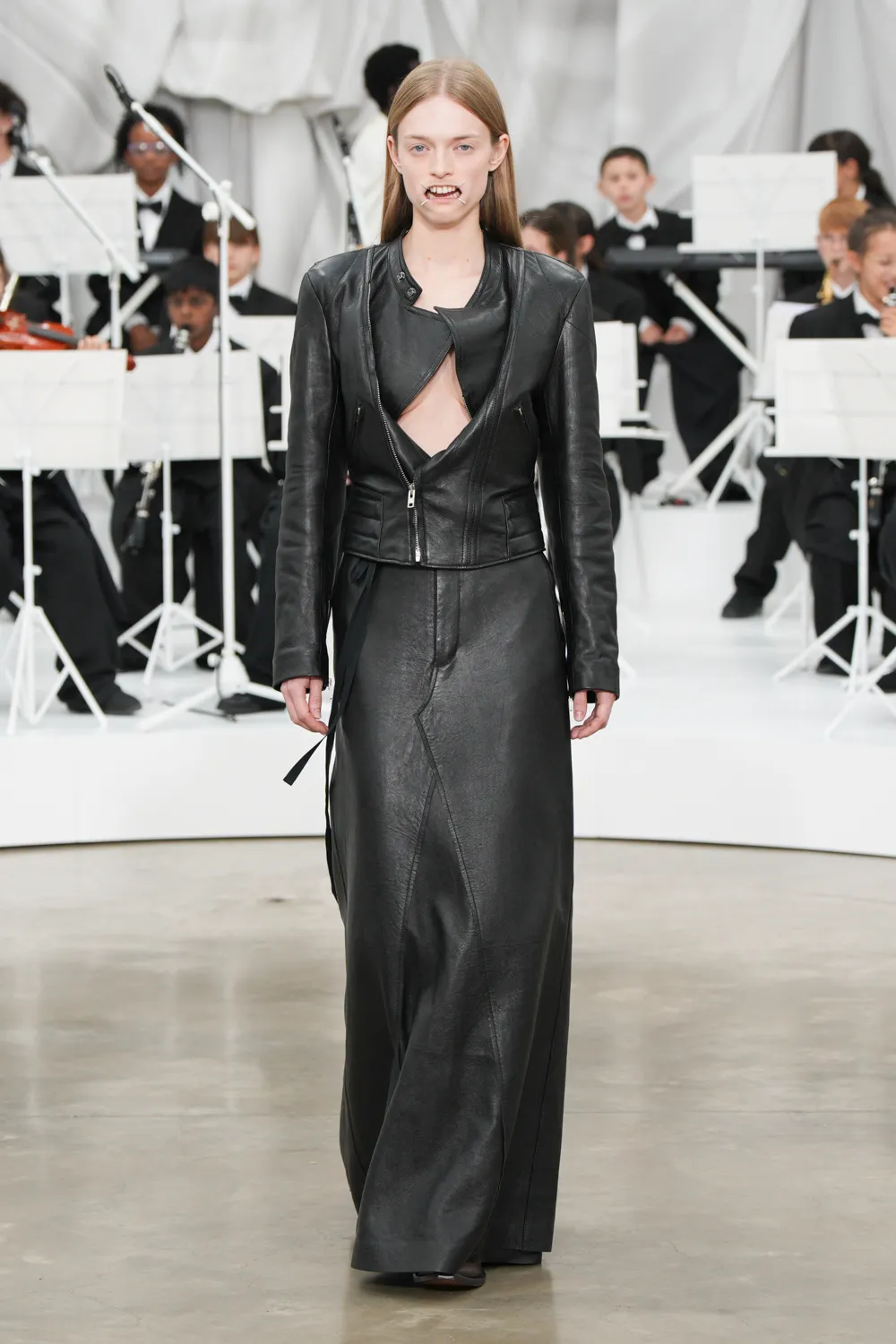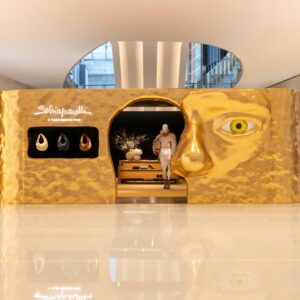Finally, it starts. This is Maison Margiela (Instagram). The orchestra steps had been waiting for its musicians for what felt like an eternity. When they do come out of backstage, they’re not seasoned performers, they’re children, swallowed by their fathers’ suits. Nothing fits. They pretend to play badly, hiding smiles behind the cacophony, and immediately the show announces itself as a deliberate act of dissonance. Intense music, intense looks, and then it hits, The Imperial March: this is Star Wars meets Sartorial Experiment. The models emerge in black leather, lips pulled back by mouth openers that make them look as if their faces had been stitched. It’s disturbing, a little grotesque, but unmistakably deliberate.
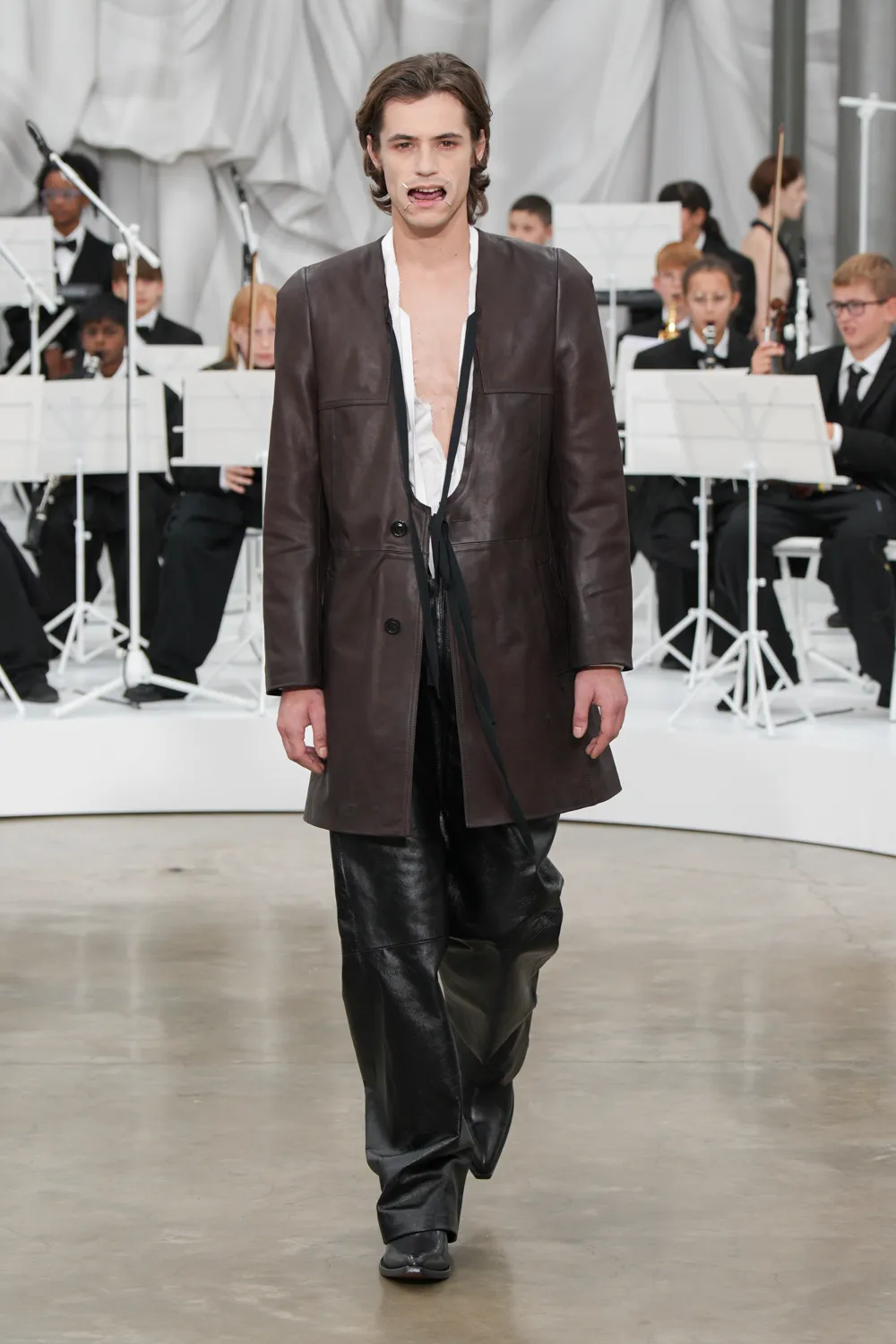
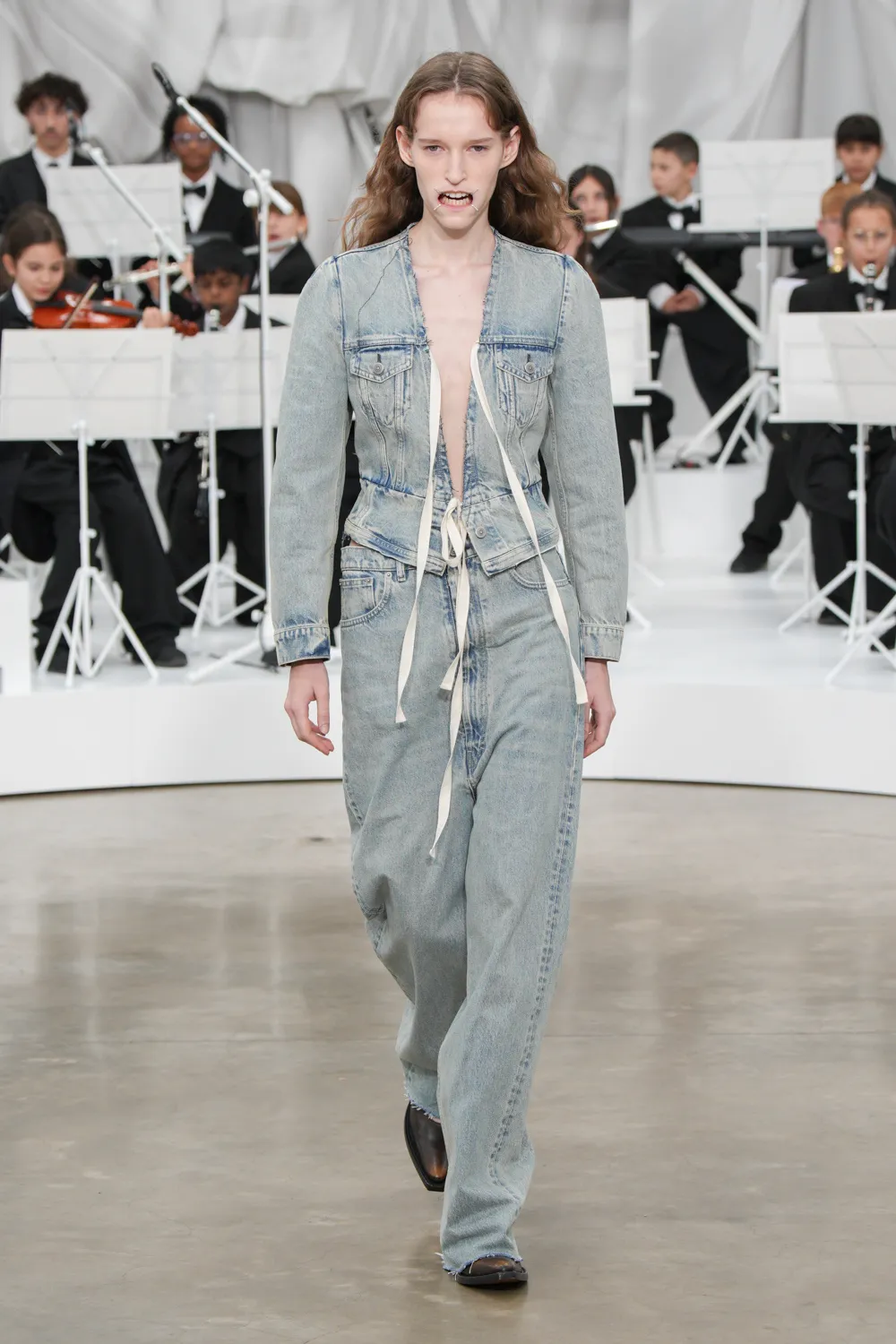
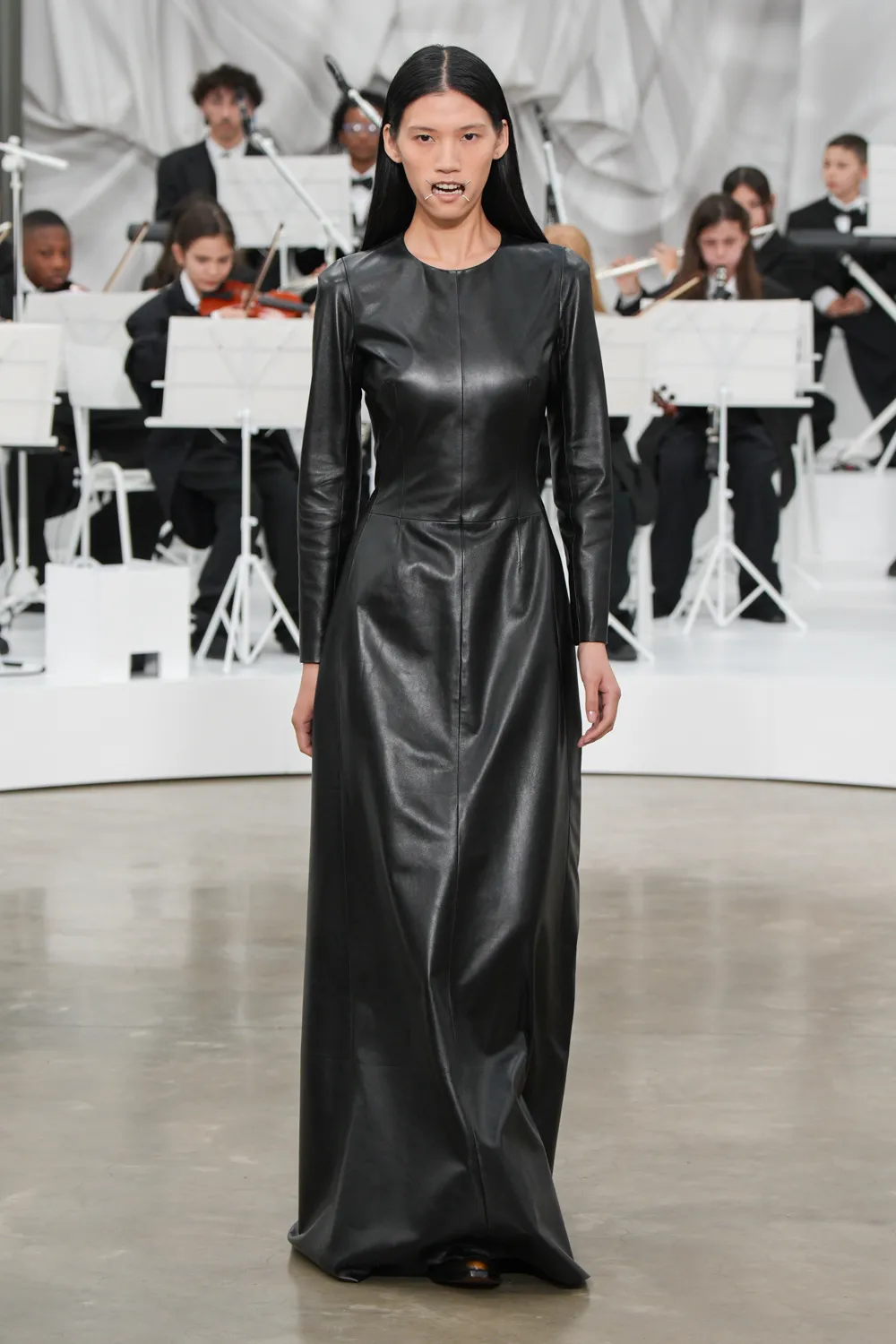
There’s an underlying joke running through it all: the kids are out of tune, painfully so, and it’s almost impossible to focus on the clothes. But then again, that’s part of the theatre. Glenn Martens isn’t presenting fashion; he’s orchestrating noise – sartorial, sonic, conceptual. The black looks dominate at first: wedge boots, slanted tailoring, androgynous silhouettes. Then come touches of denim, a single pair of blue shoes, a flash of grey tailoring – everything slightly off, like a note played one semitone too high. Some clothes look as though they’re held together with tape, an intentional imbalance, a rebellion against precision.
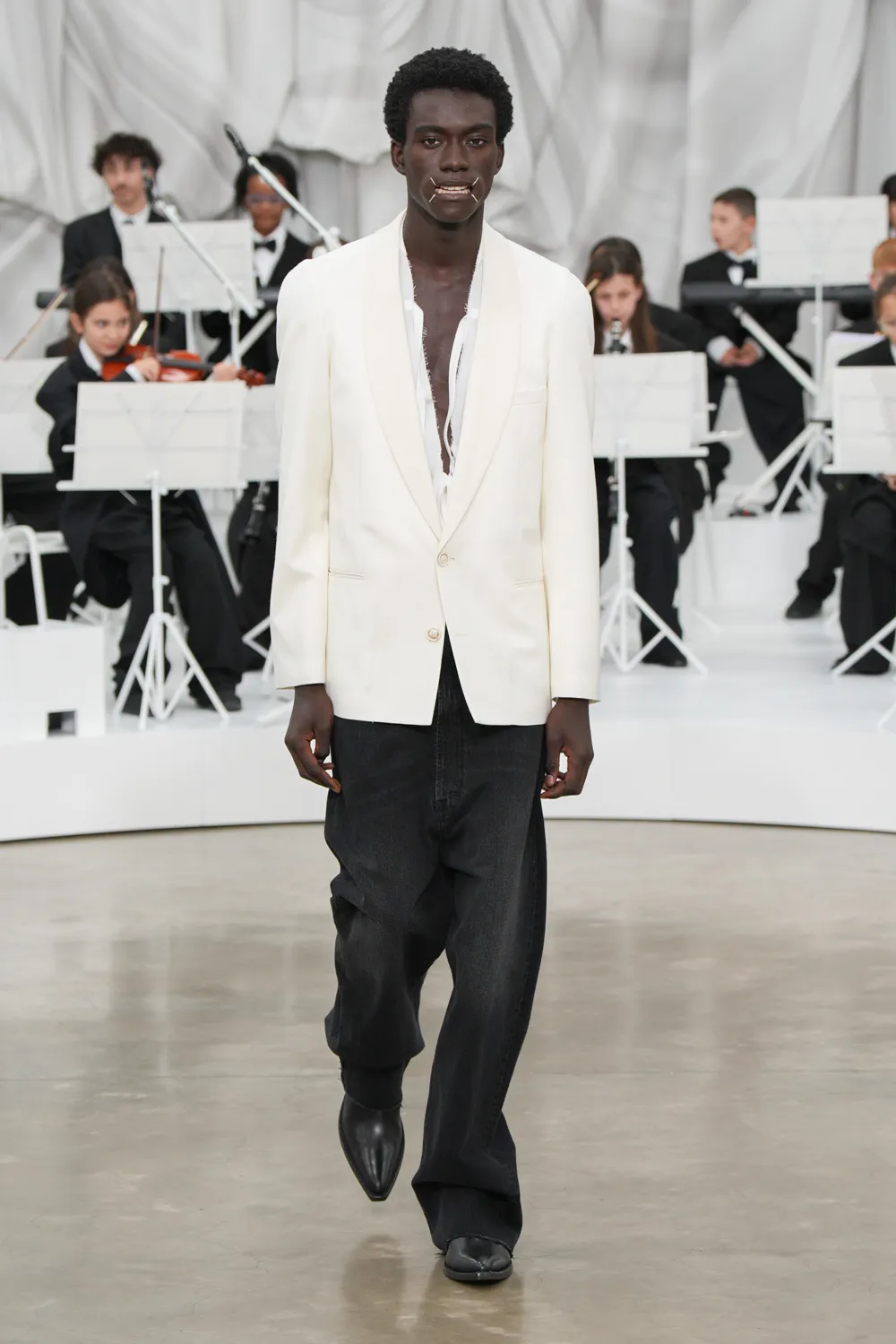
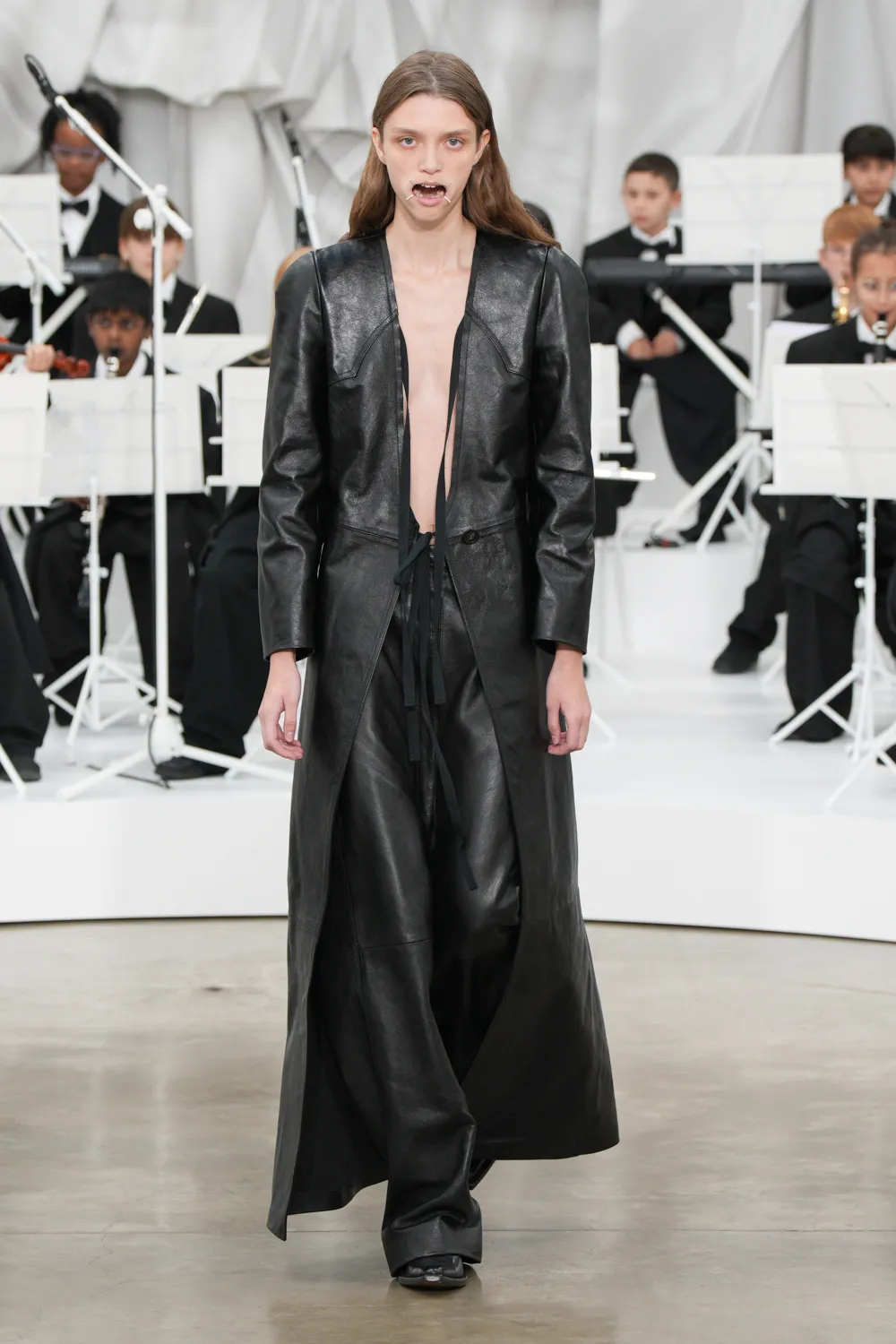
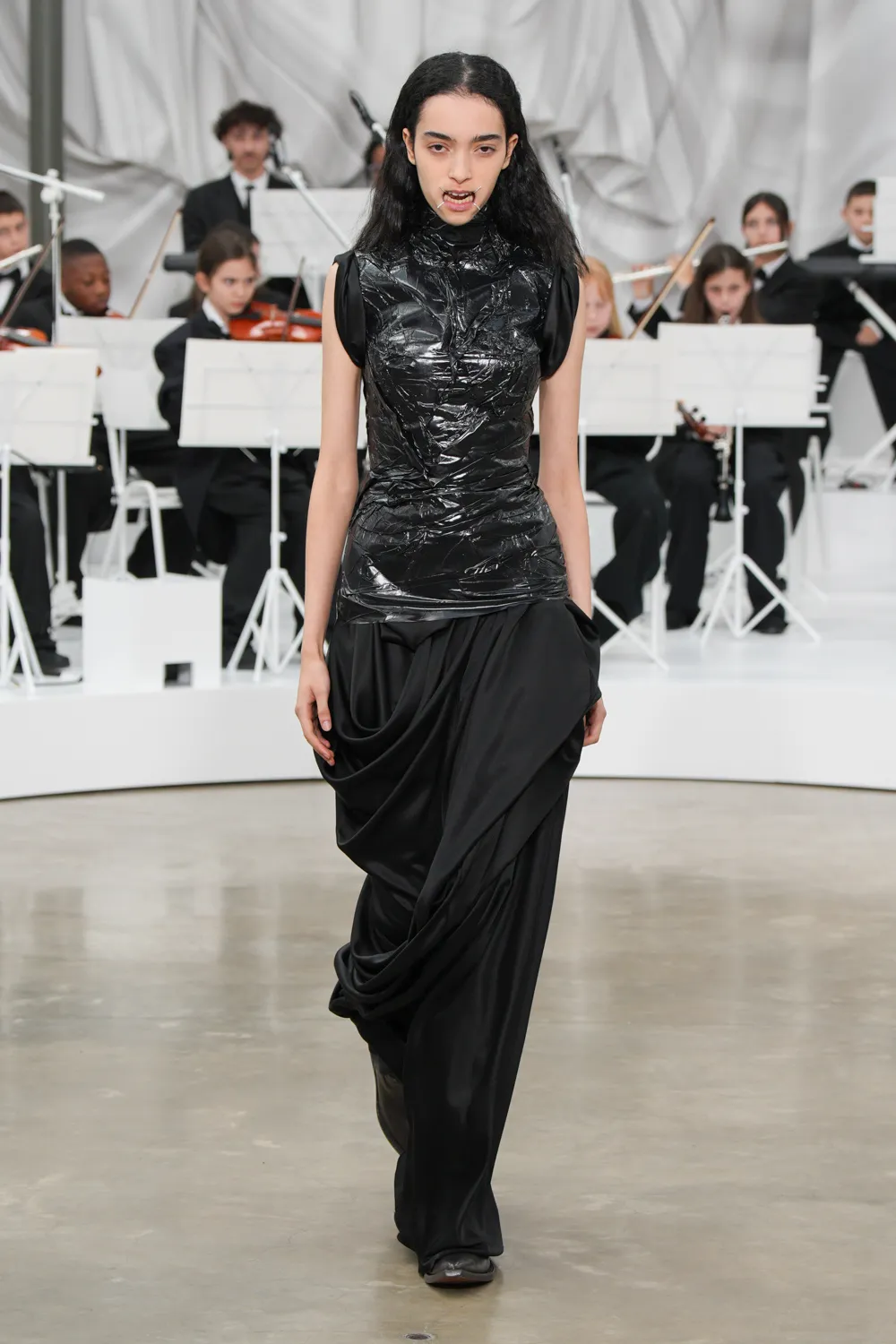
Somewhere between the chaos, the tailoring sharpens. Those aggressively square-toed men’s shoes with open-toes, the wrap dresses that feel “fine” until they suddenly aren’t, it’s a rhythm of provocation and release. And then the embroidery appears, sheer and eerie, followed by taped corsets wrapped in billowing florals. Everything looks plastified, like old luggage bound with duct tape just to make it to the next destination. It’s both absurd and sublime, playful while pretending to stay serious. You can’t help but laugh.
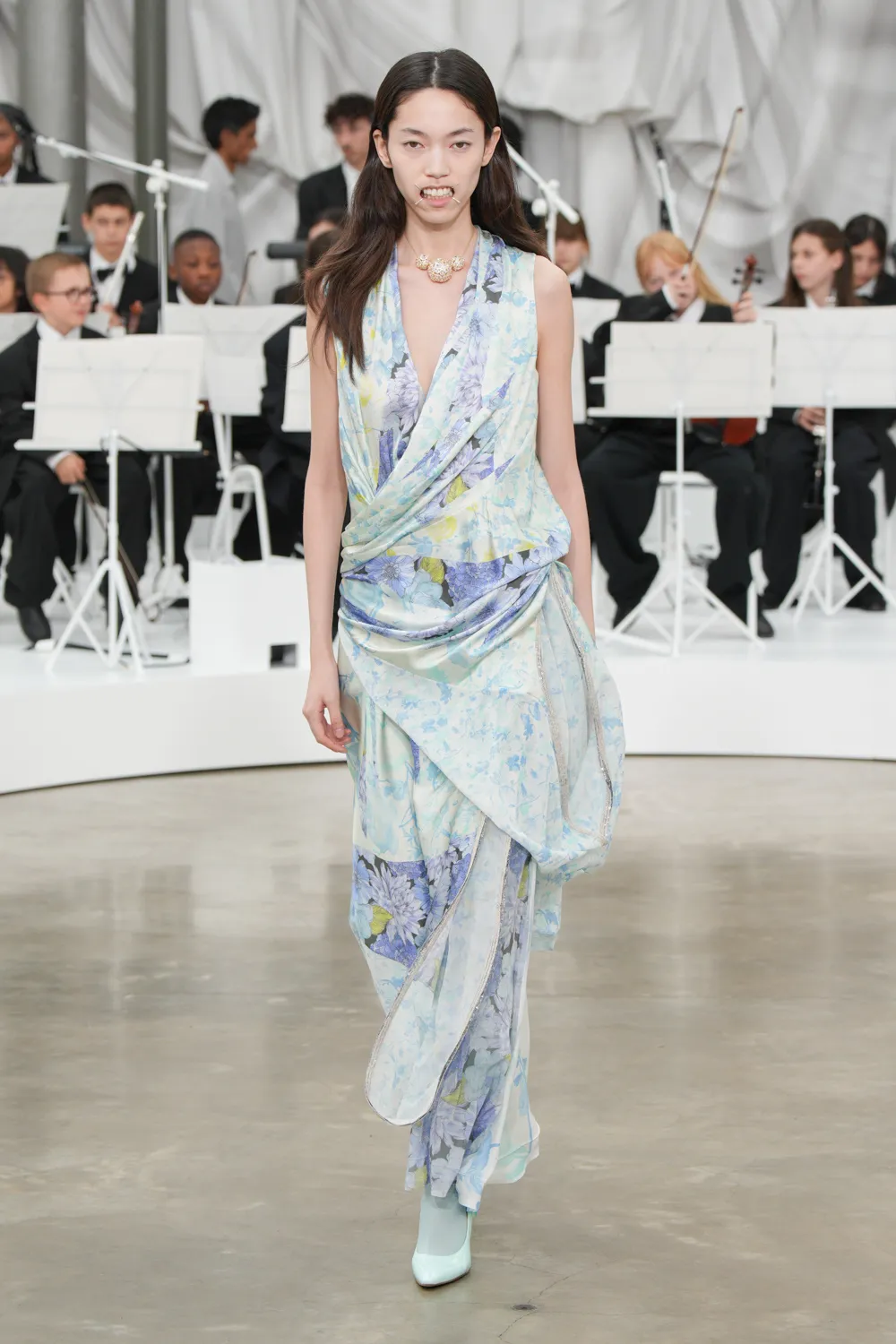
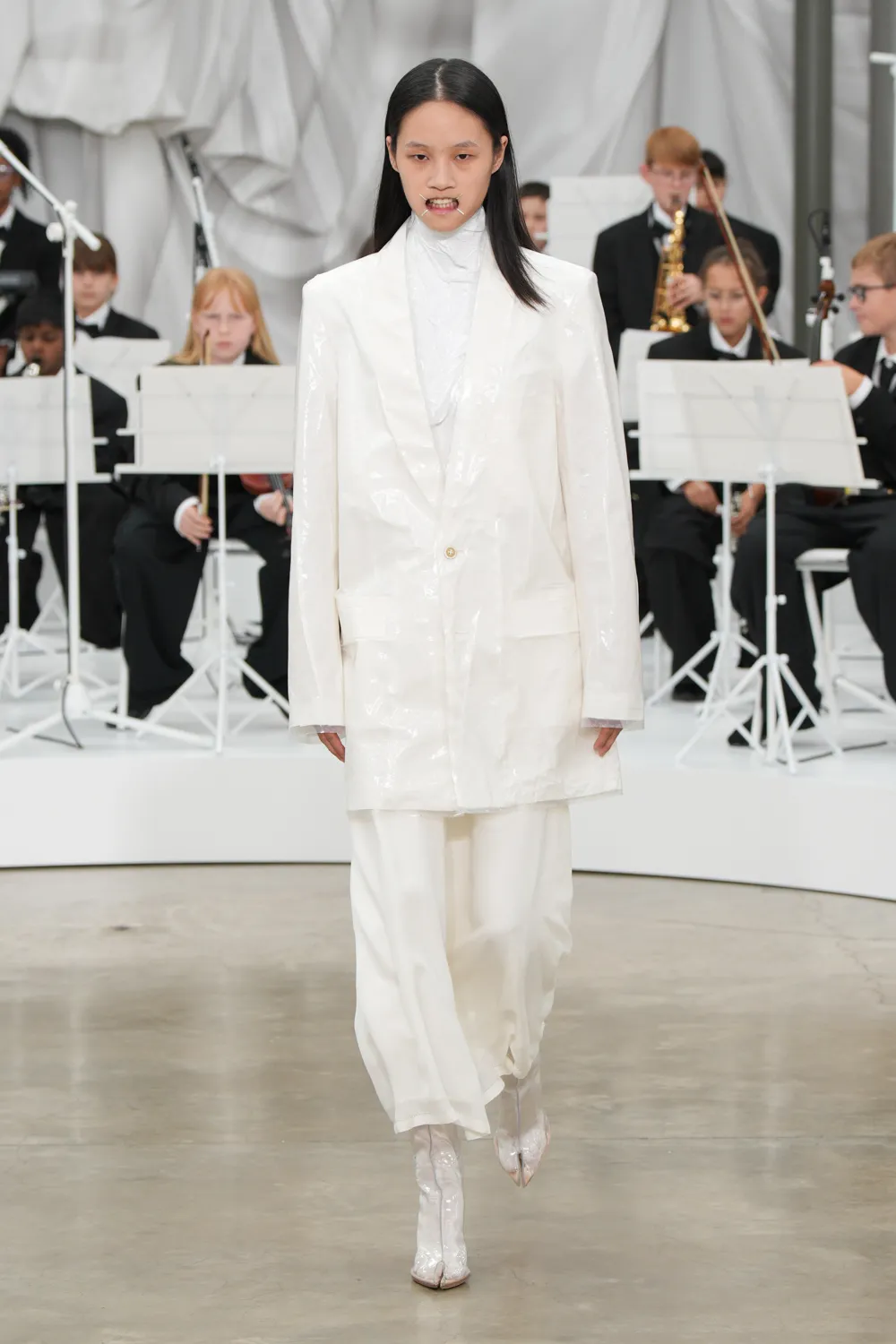
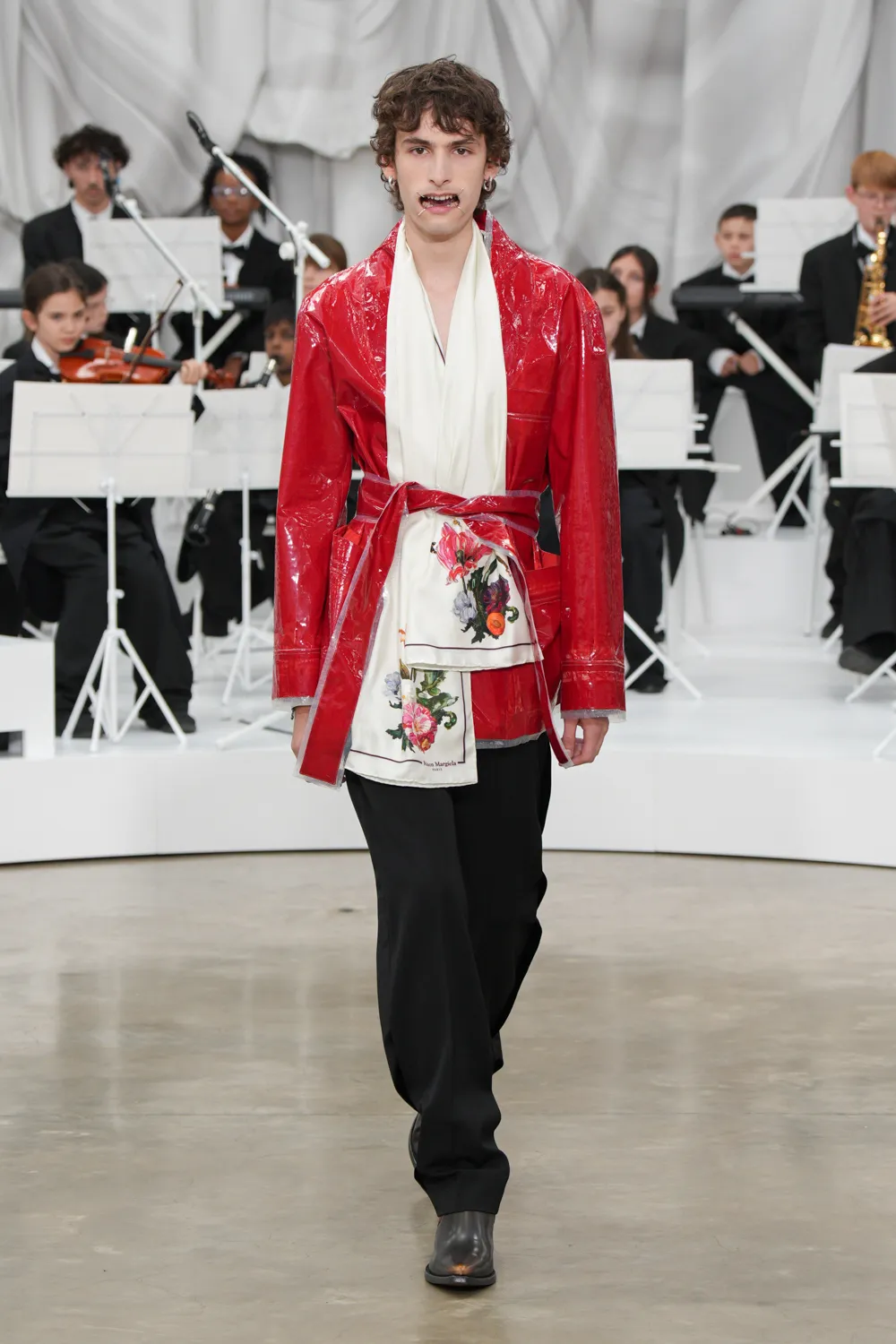
The show ends the way it began: the children return to making as much noise as humanly possible. The maestro pretends to conduct the models, the kids erupt in joyous chaos. It’s a symphony of imperfection, a reminder that sometimes fashion’s truest power lies in dissonance. Glenn Martens didn’t just fill Galliano’s shoes; he kicked them off, taped them together, and conducted his own glorious mess. While Galliano was theatre, where he brought romance and drama, Martens brings structure and defiance. The exaggeration is no longer theatrical; it’s psychological. It’s a strange and beautiful continuation of the house’s obsession with the “almost”, things slightly off, imperfect, out of tune.
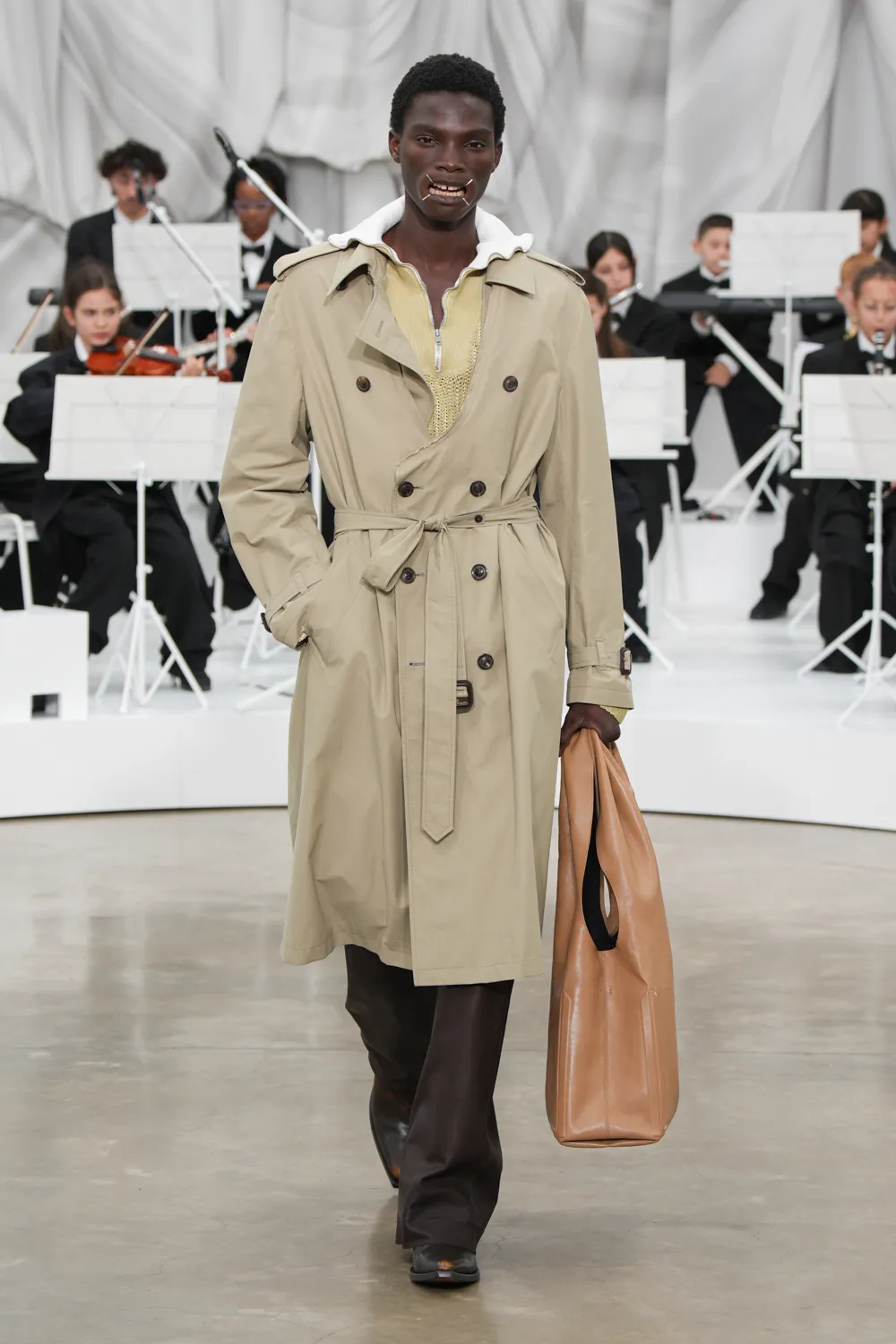
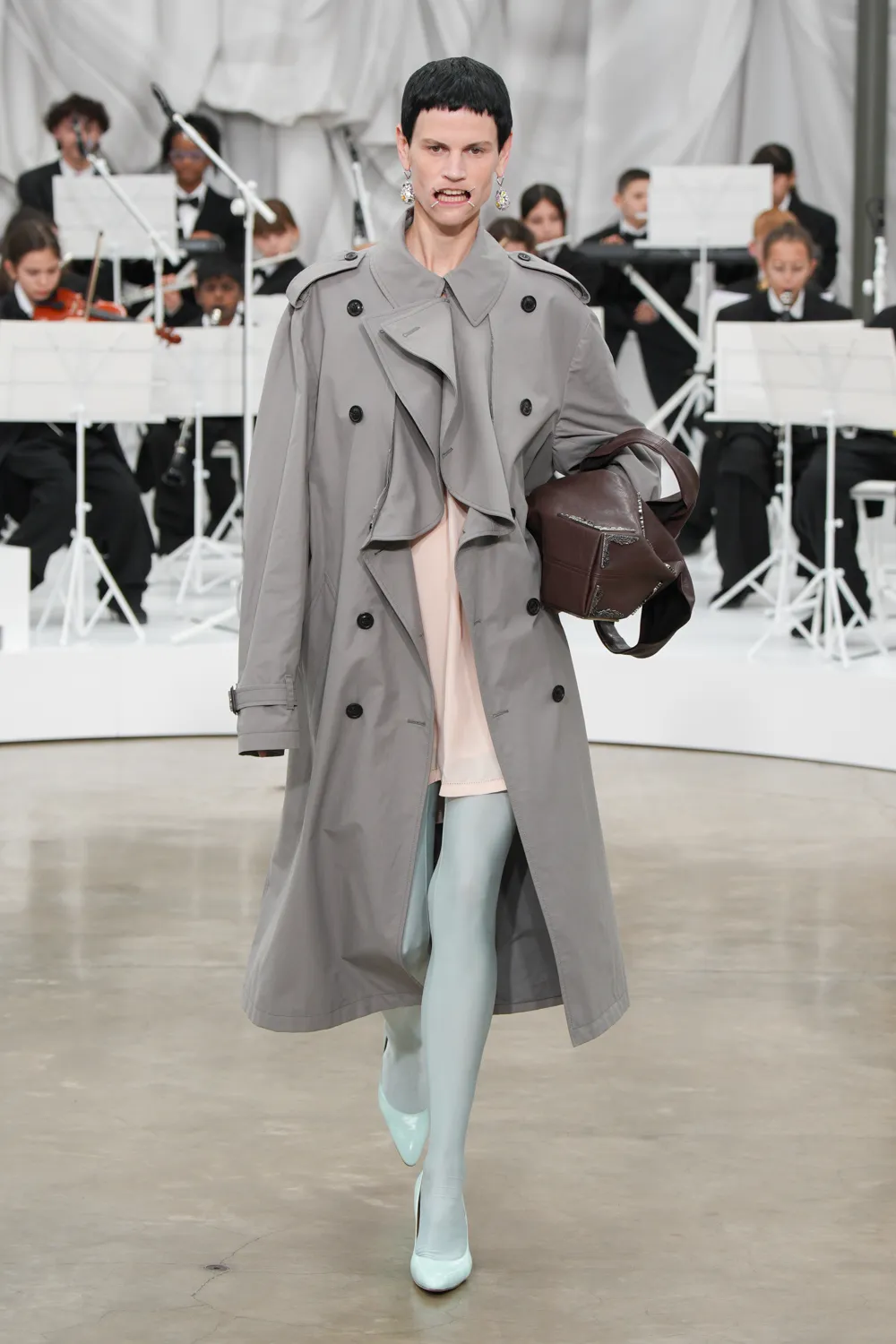
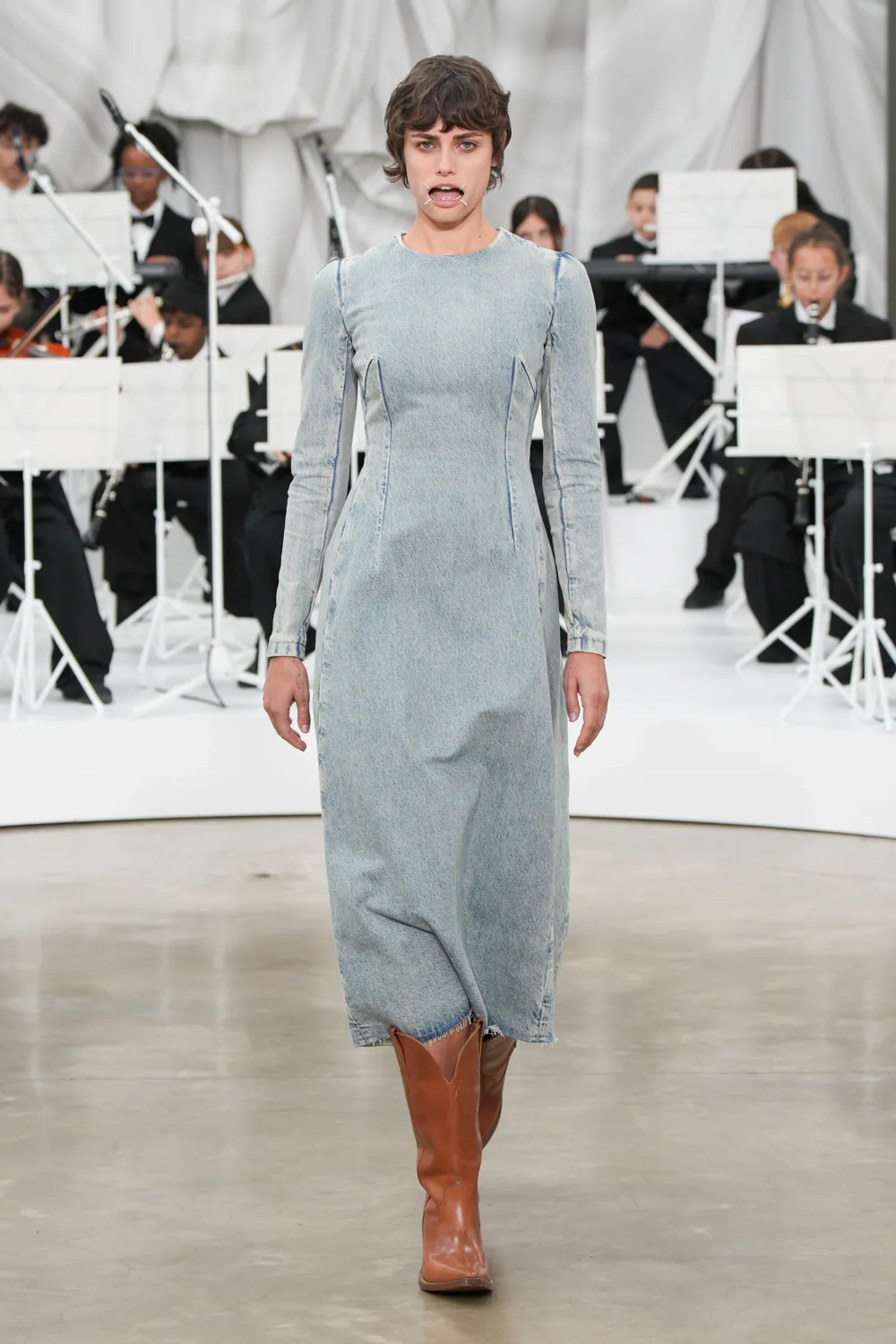
And then it’s over, a standing ovation for the kids, and we’re left wondering what comes next.
For more stories of fashion, local and international, visit our dedicated archives.
